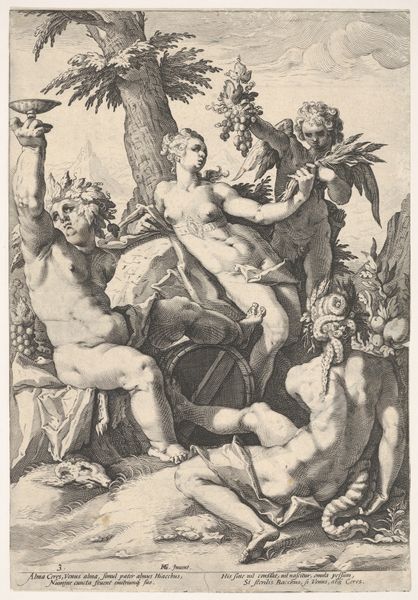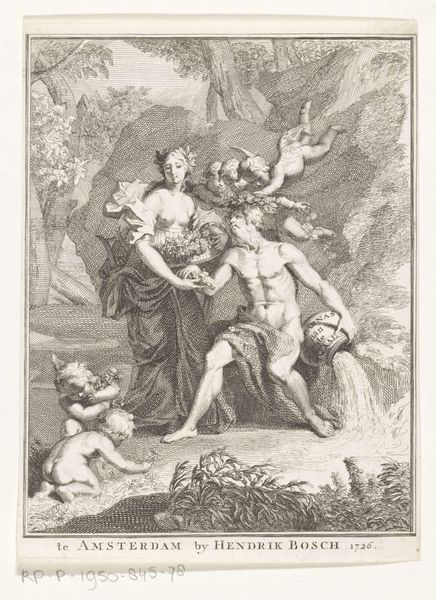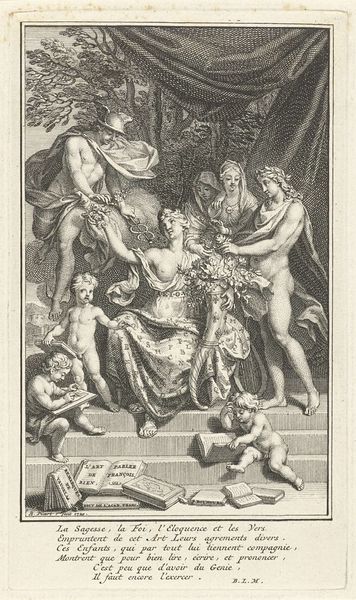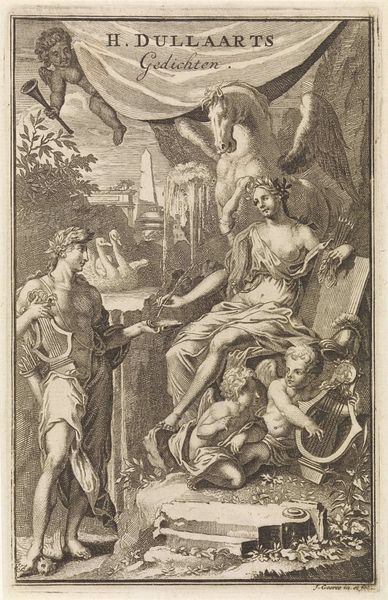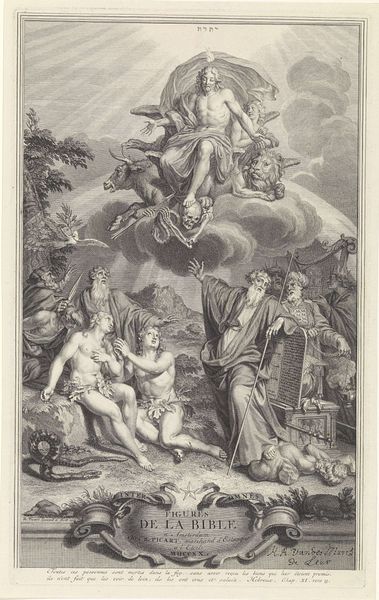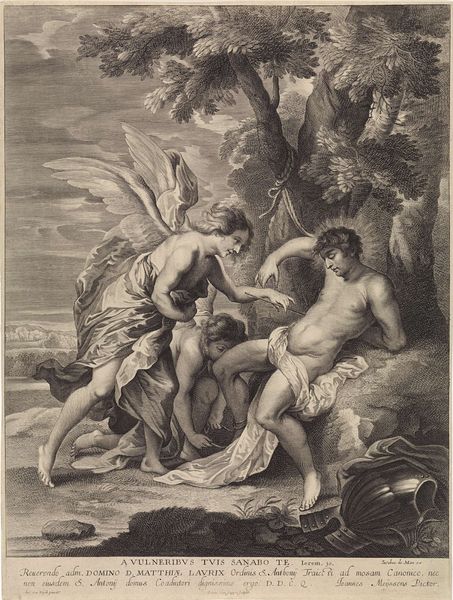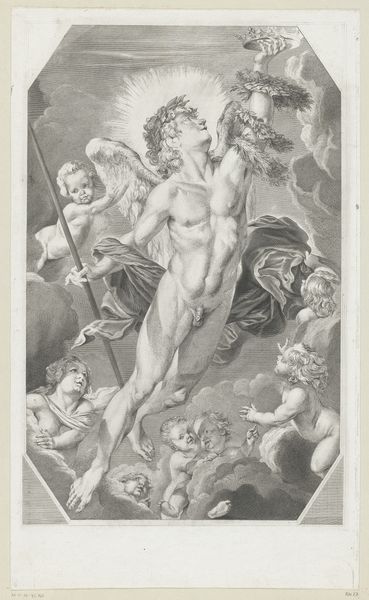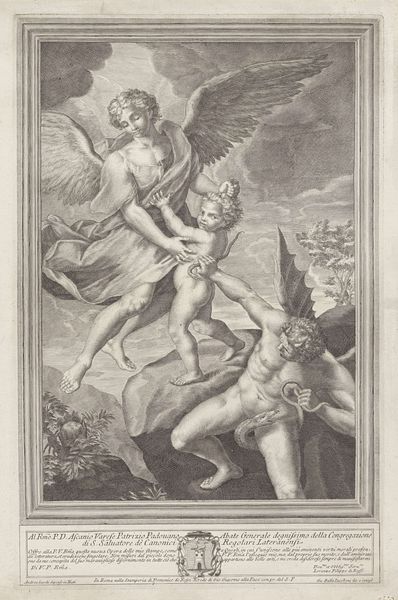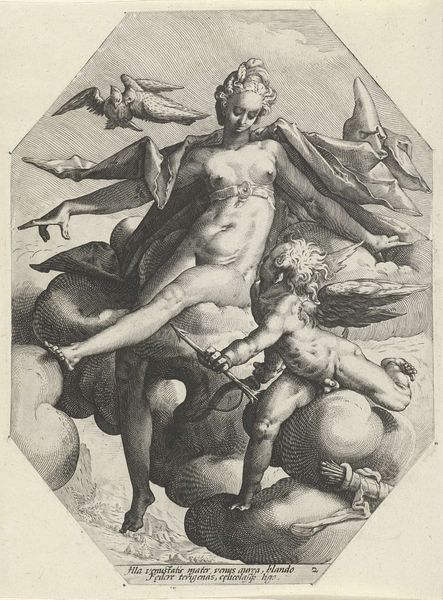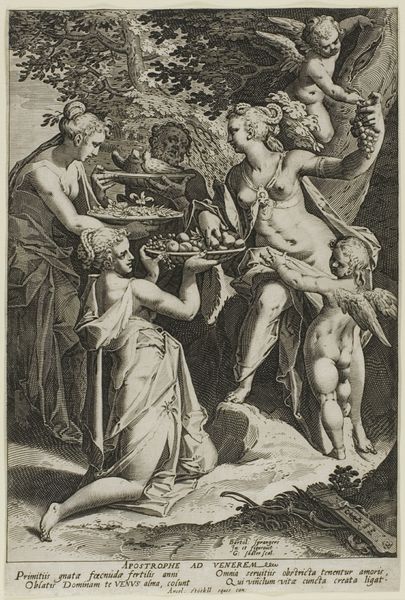
Dimensions: Sheet (Trimmed): 19 11/16 × 12 1/2 in. (50 × 31.7 cm)
Copyright: Public Domain
Curator: Let's discuss "The Judgment of Paris," an engraving dating approximately from 1748 to 1788, currently residing at the Metropolitan Museum of Art. It presents a classic mythological scene rendered in impressive detail. What are your initial thoughts on this particular work? Editor: It's incredibly busy, almost chaotic. My eye darts around, trying to find a stable point. The density of lines creates a textural landscape that, while skilled, feels overwhelming. I’m curious about the materials used – the paper, the ink – and the process of achieving this level of intricacy. Curator: Well, this piece brings to the fore ideas of beauty, power, and choice, especially regarding feminine ideals. Consider the role of Paris as the judge, a figure laden with societal expectations about masculine judgment in deciding whose beauty reigns supreme, effectively impacting entire power structures within mythology and, metaphorically, in society. Editor: I am more interested in the actual production. Engraving is labor-intensive; each line meticulously carved. How did the engraver interpret the source material, and how does their labor inform the final product’s meaning and value as a commodity? And what societal structures were behind his work as well. It clearly alludes to societal tastes as a consumer good and as a value structure too. Curator: That is definitely something to consider. Looking through a lens of feminist theory we may see how each goddess – Juno, Minerva, and Venus, attempt to conform to specific archetypes in order to appeal to this one singular gaze. They perform to claim that golden apple and that symbolic position of ultimate beauty. It highlights the restrictive and competitive roles women are often placed within, even when elevated to godhood. Editor: I agree to the impact and consequences. But think too of the physical demands of producing an engraving of this scale, which speaks to how much societal capital a piece like this will bring in the economic and labor circumstances around 1700. This print served some sort of use value beyond just existing as "high art." How and for whom would these scenes been made? And it's so intriguing what it can tell us! Curator: Indeed, its existence reflects complex power dynamics – the male gaze in art production, patronage systems, and, as you mentioned, consumption habits, all layered upon the original mythos. Thank you for making that more transparent! Editor: Of course! By recognizing the artist’s place, we can understand better who could participate and who was valued in art making in society, and so on the art’s value in those historical, and therefore in today’s, standards.
Comments
No comments
Be the first to comment and join the conversation on the ultimate creative platform.



